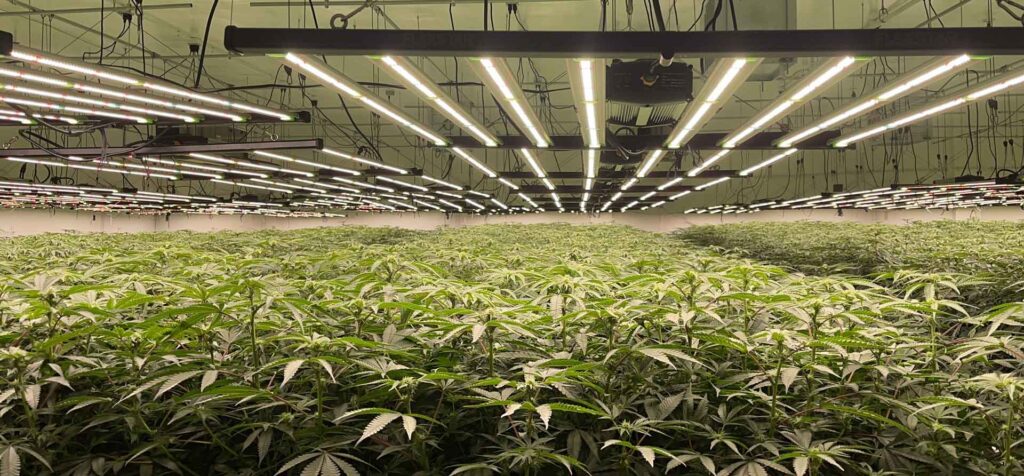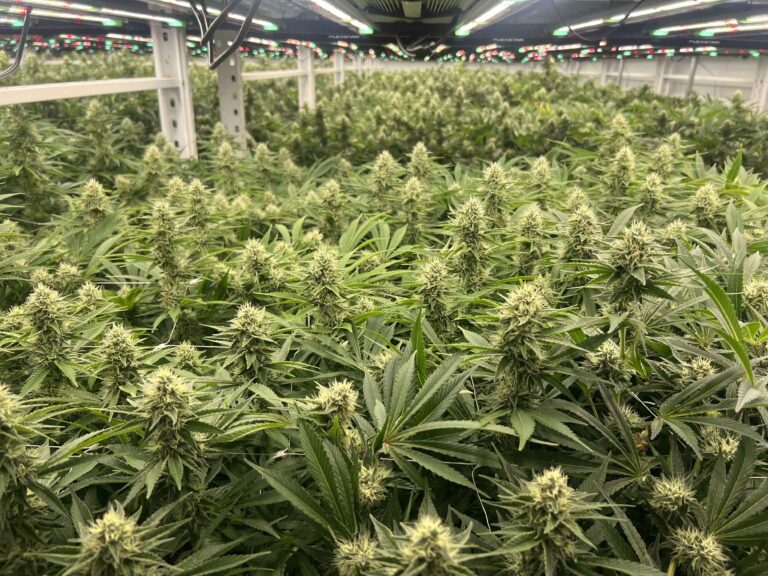Introduction
Cultivating cannabis successfully requires more than just seeds and soil; it demands the right environment, nutrients, and most importantly, the proper lighting. For indoor cannabis growers, selecting the right grow lights is crucial to achieve healthy and robust plants that yield high-quality buds. In this article, we will delve into the world of cannabis grow lights and explore the essential tips and tricks to ensure successful cultivation.
1. Understanding the Importance of Cannabis Grow Lights
What Are Cannabis Grow Lights?
Cannabis grow lights are artificial light sources designed to replicate the natural sunlight necessary for plant photosynthesis. As cannabis plants require ample light for optimal growth and bud development, indoor growers utilize these lights to mimic the outdoor conditions.
Why Are Grow Lights Essential for Cannabis Cultivation?
When cultivating cannabis indoors, you have complete control over the growing environment, including light exposure. Grow lights are essential because they provide the light spectrum necessary for different growth stages, allowing you to cultivate cannabis year-round regardless of external weather conditions.

2. Types of Cannabis Grow Lights
Different Types of Grow Lights for Cannabis
Several types of grow lights are available for cannabis cultivation, each with its advantages and disadvantages. The three most common types are LED grow lights, High-Intensity Discharge (HID) grow lights, and Compact Fluorescent Lights (CFL).
Pros and Cons of LED Grow Lights
LED grow lights are increasingly popular due to their energy efficiency and targeted light spectrum. They are known for producing less heat and consuming less electricity, making them cost-effective. However, some growers find the initial investment to be relatively high.
Pros and Cons of High-Intensity Discharge (HID) Grow Lights
HID grow lights, including Metal Halide (MH) and High-Pressure Sodium (HPS) lights, have been a long-standing favorite for cannabis cultivation. They provide intense light output, promoting vigorous growth during the vegetative phase and substantial bud development during flowering. However, they generate significant heat, requiring adequate ventilation and cooling systems.
Pros and Cons of Compact Fluorescent Lights (CFL)
CFL grow lights are budget-friendly and readily available. They are suitable for small-scale and hobbyist growers. However, they are not as powerful as LED or HID lights, and their limited light spectrum might not support optimal cannabis growth.
3. Factors to Consider When Choosing Grow Lights
Factors to Consider When Selecting Cannabis Grow Lights
Selecting the right grow lights involves considering several factors that directly impact the health and productivity of your cannabis plants.
Light Spectrum and Wavelengths
Different light spectrums play distinct roles in the cannabis growth cycle. In the realm of plant growth, blue light fosters the vegetative phase, while the red spectrum propels the process of flowering. Full-spectrum lights that cater to all growth stages are also available.
Light Intensity and Coverage Area
The intensity of light directly affects cannabis growth. Understanding the light footprint and coverage area ensures even light distribution, preventing weak or leggy growth.
Energy Efficiency and Power Consumption
Energy efficiency is vital for reducing operational costs. LED lights often lead in this aspect, consuming less power and generating less heat compared to traditional HID lights.
Cooling and Heat Management
Heat management is crucial to prevent light burn and maintain the right temperature for your cannabis plants. Adequate cooling systems are essential, especially when using high-wattage grow lights.

4. Setting Up Your Cannabis Grow Lights
Tips for Proper Placement of Grow Lights
The correct setup of grow lights is essential for maximizing their effectiveness and ensuring optimal growth.
Maintaining the Right Distance Between Plants and Lights
Each type of grow light requires specific placement and distance from the cannabis plants. Keeping the right distance prevents light burn and promotes healthy development.
Optimizing Light Cycles for Different Growth Stages
Cannabis has different light requirements during various growth phases. Adjusting light cycles to mimic natural day and night conditions is vital for successful growth.
Using Reflectors and Light Movers to Maximize Efficiency
Reflectors and light movers help distribute light evenly across the canopy, reducing shadow areas and enhancing light penetration.
5. Tips for Maximizing Cannabis Growth Using Grow Lights
How to Get the Best Results from Your Grow Lights
Optimizing the use of grow lights can significantly impact cannabis growth and yield.
Training Techniques for Light Distribution
Training techniques, such as low-stress training and defoliation, can help shape cannabis plants for better light exposure.
Light Schedules for Different Cannabis Strains
Different cannabis strains may have varying light requirements. Understanding these differences allows growers to tailor light schedules accordingly.
Supplemental Lighting and Light Boosters
Supplemental lighting, such as side lighting or vertical lighting, can provide additional light to lower parts of the plants, ensuring more even growth.
6. Common Mistakes to Avoid with Cannabis Grow Lights
Pitfalls to Watch Out for When Using Grow Lights
Even experienced growers can make mistakes when it comes to using grow lights effectively.
Overexposure and Light Burn
Exposing cannabis plants to too much light can lead to light burn and negatively impact growth and development.
Underexposure and Light Deprivation
Insufficient light exposure can cause stretched and weak plants with poor bud production.
Ignoring Light Spectrum and Color Temperature
Using the wrong light spectrum at different growth stages can lead to suboptimal results.
Inadequate Ventilation and Heat Issues
Insufficient ventilation can result in heat buildup, affecting plant health and causing stress.
7. Troubleshooting Cannabis Grow Light Issues
How to Solve Common Grow Light Problems
Being proactive in addressing grow light issues can prevent significant setbacks in your cannabis cultivation journey.
Fixing Light Flickering and Ballast Issues
Light flickering or ballast malfunctions can reduce the lifespan and performance of grow lights.
Dealing with Light Bulb Replacement and Lifespan
Regularly replacing light bulbs ensures consistent light quality and prevents sudden failures.
Tackling Light Spillage and Light Leakage
Containing light spillage and leakage is crucial for maintaining a controlled indoor growing environment.
Conclusion
Investing in the right cannabis grow lights is a pivotal decision for any indoor grower. Understanding the various types of grow lights and the factors to consider when choosing them ensures that your cannabis plants receive the optimal light they need for robust growth and bountiful harvests.

